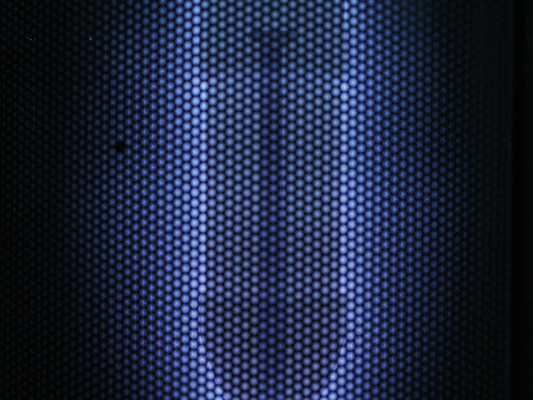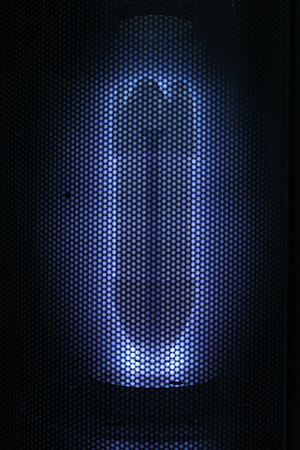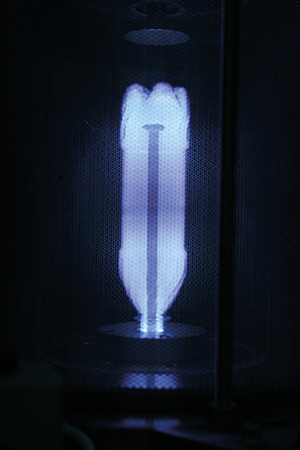

Photo credit: IKV
IKV develops special plasma coating as a sustainable solution for beverage bottles
Multi-use PET bottles with a top coat suitable for sensitive beverages
Multi-use PET bottles come out significantly better in life cycle assessments than single-use PET bottles because of their lower CO2 emission during production, and better than glass bottles in terms of transport. Nevertheless, the proportion of multi-use PET bottles in Germany – for fruit juices for example – is still below 1 %.

Normally, caustic soda solution is used to wash the bottles, yet this leads to damage not only to the PET surface itself but also to an additionally applied plasma-polymer coating. However, by developing a special top coat, the Institute for Plastics Processing (IKV) at RWTH Aachen University has succeeded in improving the barrier effect of returnable bottles by means of plasma-polymer barrier coats. This should significantly increase the number of reuse cycles or “trippage rates”.
In order to be able to fully exploit the CO2 saving potential of reusable PET bottles, innovative solutions are needed. Plasma coatings that can be applied to either the interior or exterior surface of the bottle have since become well established on the market. Whenever oxygen-sensitive beverages such as fruit juices or carbonated drinks such as soft drinks or beer have to be filled into PET bottles, a barrier to prevent the entry of O2 or the escape of CO2 is required. Plasma coatings are not only inexpensive and transparent, they are above all also environmentally friendly because, due to their nanoscale film thickness, they do not, for example, restrict the recyclability of the product. Furthermore, only a small amount of energy and material is needed to produce them, and the use of solvents or other critical chemicals is not necessary. Nowadays, these so-called SiOx coats can be applied in high quality within a few seconds and typically with speeds of more than 46,000 PET bottles an hour.

However, the SiOx coatings that have since become normal for PET single use bottles are unable to withstand the cleaning process of PET multi-use bottles with caustic soda solution (NaOH), with the result that the coating is partly or completely removed. The aggressive washing solution also attacks the PET itself so that the number of reuse cycles and the recoatability are limited. Returnable glass bottles can be refilled up to 50 times, while PET multi-use bottles can at present only be refilled up to 20 times.
In order to solve this problem, IKV has, in a transfer project from the Collaborative research centre SFB-TR 87 in cooperation with the Ruhr University of Bochum and KHS Corpoplast GmbH from Hamburg, developed a coating system that can withstand the washing process with caustic soda solution. This top coat is thermally and chemically stable, impermeable and must be applied without defects and as homogeneously as possible to the entire surface. Having ensured that the key parameters such as the selection of process gases, the process pressure and the amount of energy introduced were correctly set, the team managed to produce a coating that is resistant to caustic soda solution. These coatings, applied to reusable PET bottles, have the potential not only to make the advantages of multi-use PET bottles accessible for sensitive beverages, too, but also to increase the number of times the bottles can be recoated. As a result, cycles can be closed and the circular economy in Germany can be further strengthened.
The comPETence center provides your organisation with a dynamic, cost effective way to promote your products and services.

magazine
Find our premium articles, interviews, reports and more
in 3 issues in 2025.


